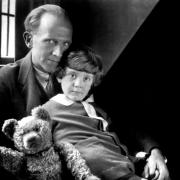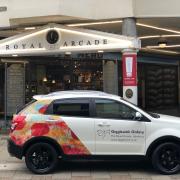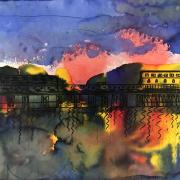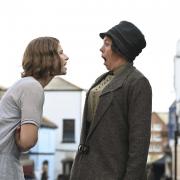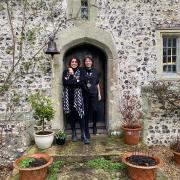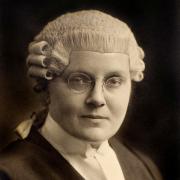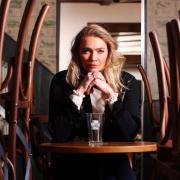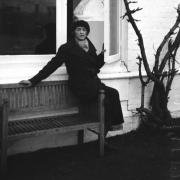Renowned for his Sussex landscapes and seascapes, Robert Tavener is being recognised with a new exhibition

This year marks the centenary of the birth of artist and printmaker Robert Tavener (1920-2004). Although born in London, Tavener is often thought of as a Sussex artist because of his images of Sussex landscapes and seascapes. He lived in Eastbourne for more than 50 years and his home was at the foot of the Downs, a place that he loved. The Sussex landscape influenced much of his work with recurring images of the Downs, ploughed fields, flint barns, fields of poppies, chalk paths and rolling hills.
Born in London in 1920 and brought up in Hampstead, north London, Tavener had always enjoyed art. As a boy he sat for hours making chalk drawings on the pavements. On leaving school he took an office job for a short time before being called up into the army in 1940. He served in the Royal Artillery for six years and in World War II took part in the D-Day landings at Arromanches, France. It was at the end of the war, whilst still a soldier, that Tavener had the opportunity to pursue his love of art. For eight months, he studied drawing and painting at the College of the Rhine Army. On his return to London in 1946 he enrolled at Hornsey College of Art and took a National Diploma in Design, specialising in lithography; he also gained an Art teacher’s diploma.
After college Tavener began his career as an art teacher, working for a few years in Kent. In 1953, now married, Tavener was delighted to get a job teaching printmaking at Eastbourne College of Art and Design. The move to Eastbourne was a happy one for Tavener, his wife Jane and daughter Mary. Tavener would spend the rest of his life in Eastbourne.
Tavener set up a highly regarded printmaking department at the college and is fondly remembered by many students as a teacher who truly listened to students. He was later appointed as Vice-Principal and retired in 1980. Tavener also taught printmaking in London once a week for a number of years at St Martin’s School of Art.

Tavener was a highly committed artist and was passionate about the craft of printmaking. When not teaching at the college he would be found working away in his studio and his output was prodigious. He produced most of his prints on an old Albion Press, cast in 1882, which took pride of place in his studio. His prints were hand-made in small editions. Tavener was dedicated to printmaking and he enjoyed the disciplined approach it required. He was meticulous in his work and set high standards that he rarely felt he achieved, often filled with self-doubt, despite his obvious success. For subject matter he celebrated “the pattern, shape and texture of English countryside and architecture and their relationships with each other, particularly when interpreted through the limitations and disciplines of print.”
He would capture interesting scenes whether in the countryside or city using his camera, sketchbook and watercolour paints. Once back in his studio he would use the sketches and photographs as the basis for his print designs. People often ask if images in his work are of a particular place but Tavener explained: “You have to be careful not to think of them as being portraits of specific places. They are usually an amalgam of my drawings and painting made into a sort of summing up of a landscape.”
This summing up is what makes Tavener’s work so appealing. The images create a feeling for the places and for many they represent a distillation of the essence of a place. A connection is made between viewer and artist. This is particularly the case with his prints of Sussex.
Tavener was also a very successful illustrator and received commissions from important clients such London Transport, Shell, and the BBC. He became a well-known illustrator designing covers for Homes and Gardens magazines, the Listener, and Liliput magazine as well as hundreds of illustrations for children’s books by publishers such as Longman, Penguin, and Methuen.

Robert Tavener died in July 2004 after suffering a fall at his home. By the time he died Tavener had worked for over half a century as a printmaker, teacher and illustrator.
His prints have become highly collected and his work is held in more than 25 public collections including the Government Art Collection and the Victoria and Albert Museum. He held more than 35 solo exhibitions during his career and exhibited at the Royal Academy Summer Exhibition every year for 34 years. A few years before he died he left a collection of his work to the Towner Gallery in Eastbourne, which can be viewed by appointment.
Robert Tavener: Pattern - Shape - Texture runs from 3-31 October at Emma Mason Gallery, Lushington Lane, Eastbourne.
Oh, Mr Tavener, I wish I had the Original! by Emma Mason is published by Bread and Butter Press





